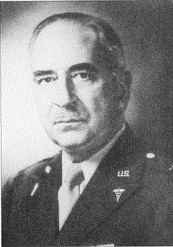George Russell Callender
American physician and medical researcher
George Russell Callender (1898–1973) was an American physician and medical researcher known for his contributions to the field of pathology. He made significant advancements in the understanding of cancer and tumor biology.
Early Life and Education[edit | edit source]
George Russell Callender was born in 1898. He pursued his medical education at the University of Pennsylvania, where he earned his M.D. degree. During his time at the university, he developed a keen interest in pathology and medical research.
Career[edit | edit source]
After completing his education, Callender joined the faculty at the University of Pennsylvania School of Medicine. He later moved to the University of Texas MD Anderson Cancer Center, where he became a prominent figure in cancer research. His work primarily focused on the classification and treatment of tumors.
Contributions to Medicine[edit | edit source]
Callender is best known for his work on the classification of melanoma, a type of skin cancer. He developed a system for categorizing melanomas based on their histological characteristics, which has been widely adopted in the medical community. This classification system has helped in the diagnosis and treatment of melanoma, improving patient outcomes.
In addition to his work on melanoma, Callender conducted research on various other types of tumors, contributing to the broader understanding of cancer biology. His research has been published in numerous medical journals, and he has been cited extensively by other researchers in the field.
Legacy[edit | edit source]
George Russell Callender's contributions to pathology and cancer research have had a lasting impact on the field of medicine. His classification system for melanoma remains a critical tool for pathologists and oncologists. Callender's work has paved the way for further advancements in cancer diagnosis and treatment.
Personal Life[edit | edit source]
Callender was known for his dedication to his work and his commitment to advancing medical knowledge. He passed away in 1973, leaving behind a legacy of significant contributions to the field of pathology.
See Also[edit | edit source]
- Pathology
- Cancer research
- Melanoma
- University of Pennsylvania
- University of Texas MD Anderson Cancer Center
References[edit | edit source]
External Links[edit | edit source]
Search WikiMD
Ad.Tired of being Overweight? Try W8MD's physician weight loss program.
Semaglutide (Ozempic / Wegovy and Tirzepatide (Mounjaro / Zepbound) available.
Advertise on WikiMD
|
WikiMD's Wellness Encyclopedia |
| Let Food Be Thy Medicine Medicine Thy Food - Hippocrates |
Translate this page: - East Asian
中文,
日本,
한국어,
South Asian
हिन्दी,
தமிழ்,
తెలుగు,
Urdu,
ಕನ್ನಡ,
Southeast Asian
Indonesian,
Vietnamese,
Thai,
မြန်မာဘာသာ,
বাংলা
European
español,
Deutsch,
français,
Greek,
português do Brasil,
polski,
română,
русский,
Nederlands,
norsk,
svenska,
suomi,
Italian
Middle Eastern & African
عربى,
Turkish,
Persian,
Hebrew,
Afrikaans,
isiZulu,
Kiswahili,
Other
Bulgarian,
Hungarian,
Czech,
Swedish,
മലയാളം,
मराठी,
ਪੰਜਾਬੀ,
ગુજરાતી,
Portuguese,
Ukrainian
Medical Disclaimer: WikiMD is not a substitute for professional medical advice. The information on WikiMD is provided as an information resource only, may be incorrect, outdated or misleading, and is not to be used or relied on for any diagnostic or treatment purposes. Please consult your health care provider before making any healthcare decisions or for guidance about a specific medical condition. WikiMD expressly disclaims responsibility, and shall have no liability, for any damages, loss, injury, or liability whatsoever suffered as a result of your reliance on the information contained in this site. By visiting this site you agree to the foregoing terms and conditions, which may from time to time be changed or supplemented by WikiMD. If you do not agree to the foregoing terms and conditions, you should not enter or use this site. See full disclaimer.
Credits:Most images are courtesy of Wikimedia commons, and templates Wikipedia, licensed under CC BY SA or similar.
Contributors: Prab R. Tumpati, MD

